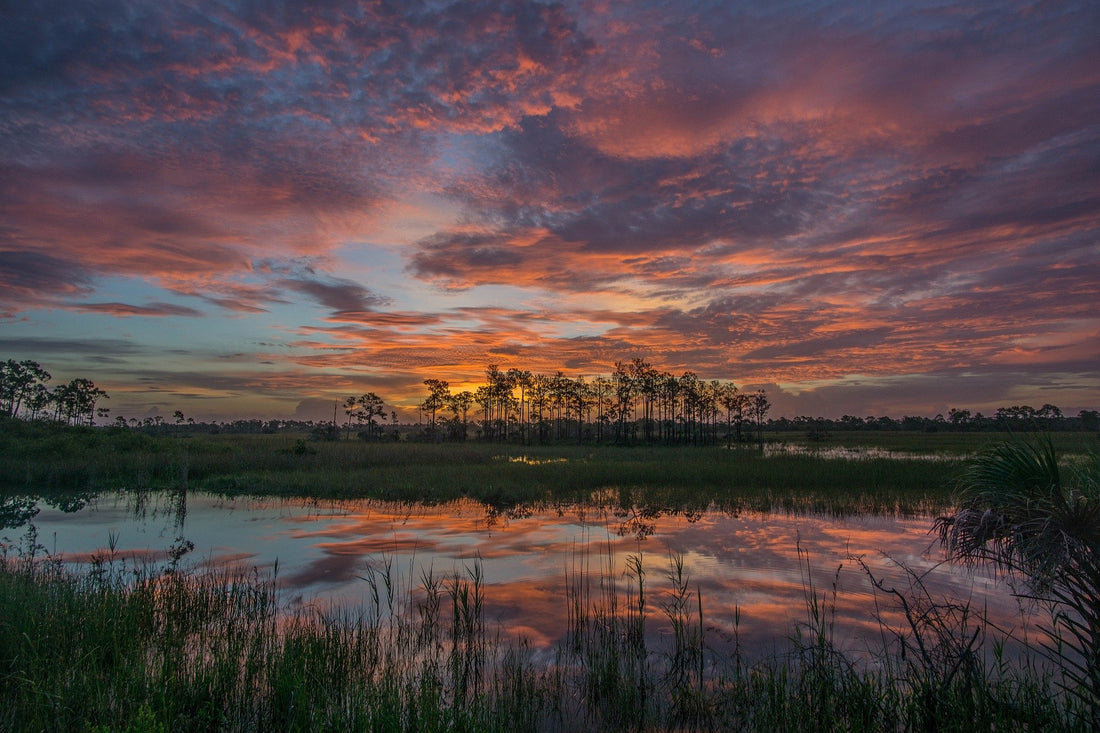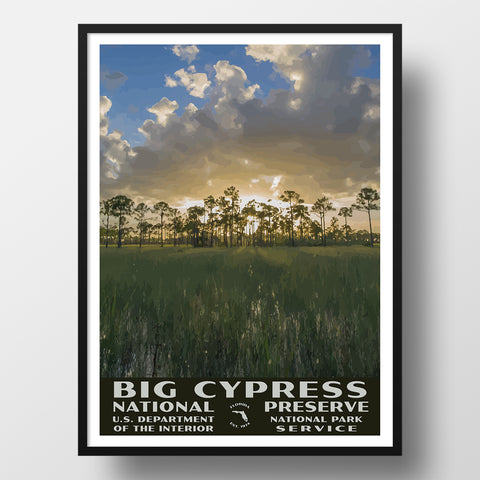Big Cypress National Preserve in southern Florida is great stop when driving in between the Gulf and Atlantic Coast. If you are going to Florida and planning on driving around the state, it is likely that Big Cypress National Preserve is right on the way for you, and you really should check it out!
Situated only 45 minutes away from Miami and adjacent to Everglades National Park, Big Cypress National Preserve’s namesake are the large Cypress trees, most of all which were hauled away on trains earlier in the 20th century. Cypress trees still remain, but most of them are small. Even though they are hundreds of years old in some instances, many of them are small since they their nutrients was limited.
Even though you won’t see numerous strands of large Cypress trees today, the Preserve is well worth a visit. Even if you only have a few hours or so, there are a few great spots to visit that we highly recommend and won’t take much time at all.
In addition to checking out the Cypress trees, what the Preserve is best known for is the abundance of wildlife. The number of alligators and birds (and how easy it is to see them) will surely amaze you! There are also several scenic drives with plenty of places to stop along the way as well as two visitor centers.
BIG CYPRESS NATIONAL PRESERVE HISTORY
At 729,000 acres, Big Cypress National Preserve is nearly half the size of Everglades National Park. It actually was originally slated to be part of Everglades National Park when it was established in 1934, but because of the Great Depression and the beginnings of World War 2, the government would not support a new National Park of that size.
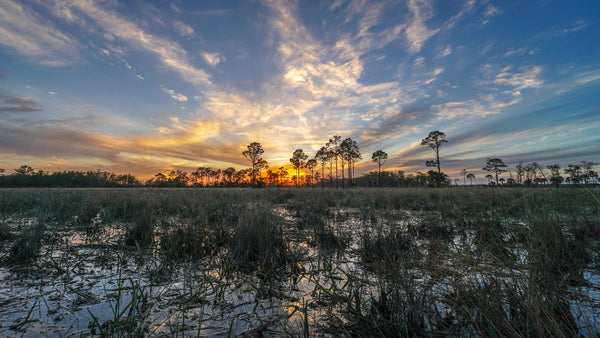
Unfortunately, this meant that the land stayed open to logging operations and oil prospecting. By the time the land became a National Preserve in 1974 (after a ton of work by the Florida Legislature and local conservationists), nearly all of the large Cypress trees had been removed, as wood from the Cypress Trees is rot resistant and great for docks in particular.
THINGS TO DO IN BIG CYPRESS NATIONAL PRESERVE
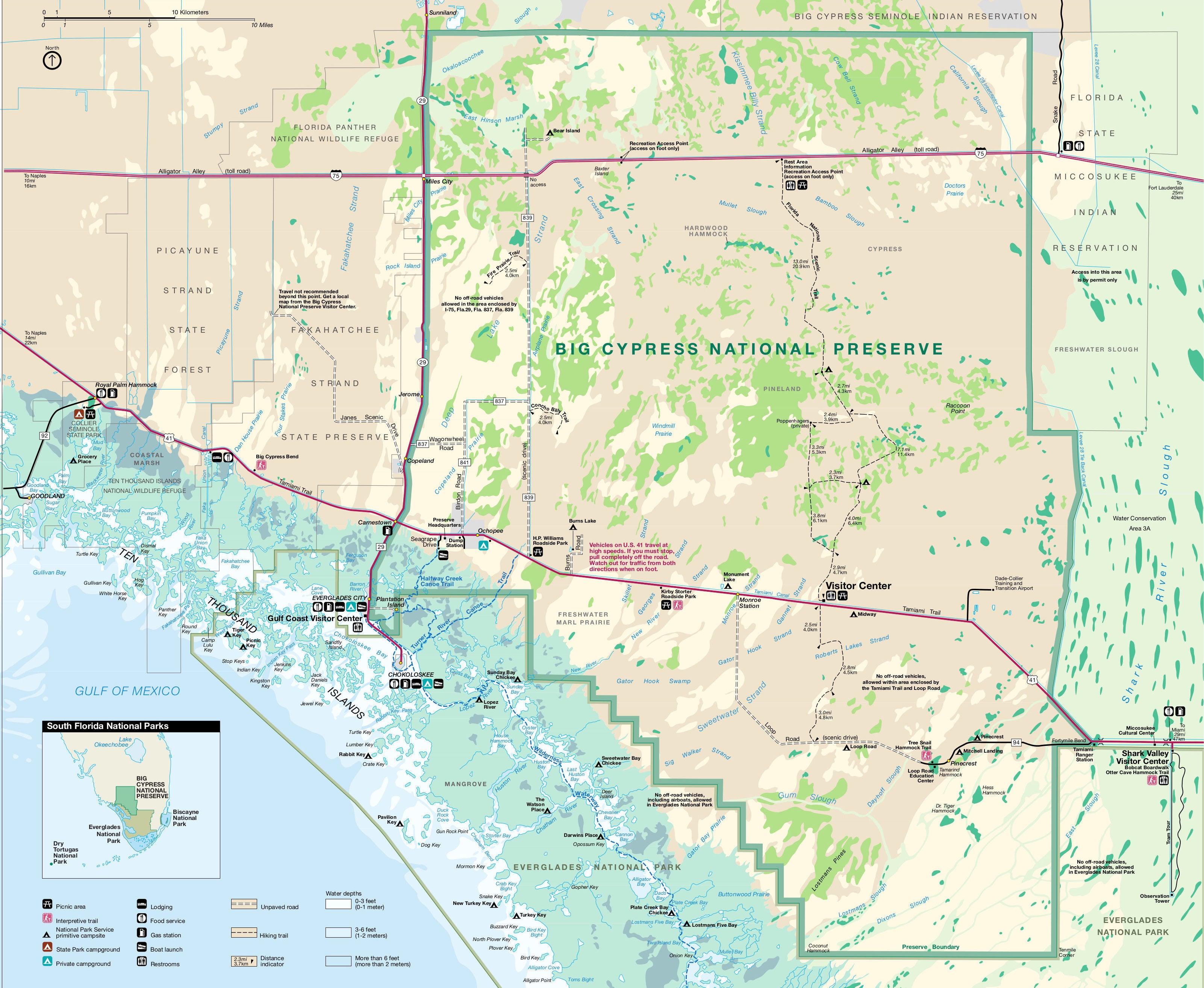
Big Cypress National Preserve map, courtesy of the National Park Service
If you are heading to Big Cypress National Preserve, you will spend plenty of time on the Tamiami Trail. This road (also known as Florida Highway 41) cuts through the heart of the preserve. There is more to see than just what is visible from the highway. But even if you are only driving through and don’t have time to take some of the scenic loops or short hikes, you will not be disappointed with your time here!
If you do have some time to poke around or even a day or more, there is plenty to do. Here are our recommendations:
Big Cypress Swamp Welcome Center
The Big Cypress Swamp Welcome Center is located on the west side of the Preserve on the Tamiami Trail. The larger of the two visitor centers, this building has plenty of exhibits, a small store, a video to learn about the swamp and on-site rangers to help you plan your visit. There is also a short boardwalk outside to allow you to view area wildlife. If you are coming from the west, we recommend stopping at the visitor center on your way into the Preserve.
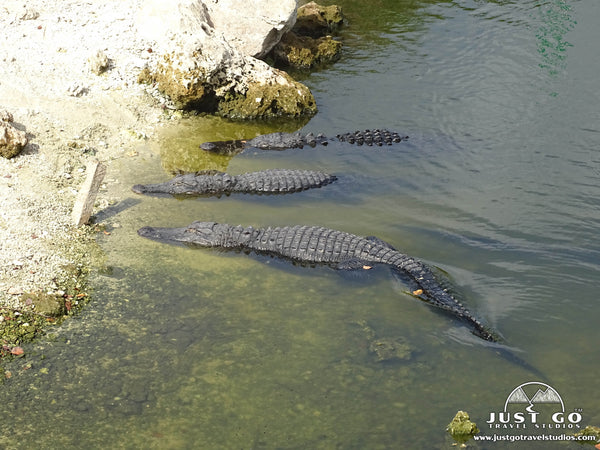
Oasis Visitor Center
The Oasis Visitor Center is located in the center of the preserve on the Tamiami Trail. This was originally an airplane hangar and then a gas station before being turned into a visitor center in the 1980’s. Inside the center you can find a variety of exhibits, but what we found most helpful were the on-staff rangers to help you understand the latest conditions and what they recommend for the time of year you are visiting. There is also a small path outside that overlooks a waterway, where you can see plenty of alligators!
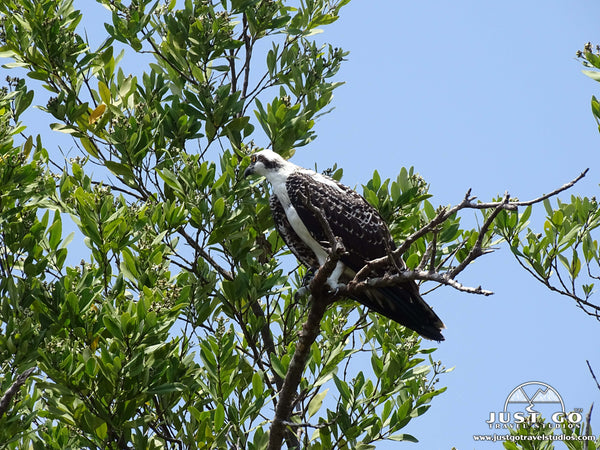
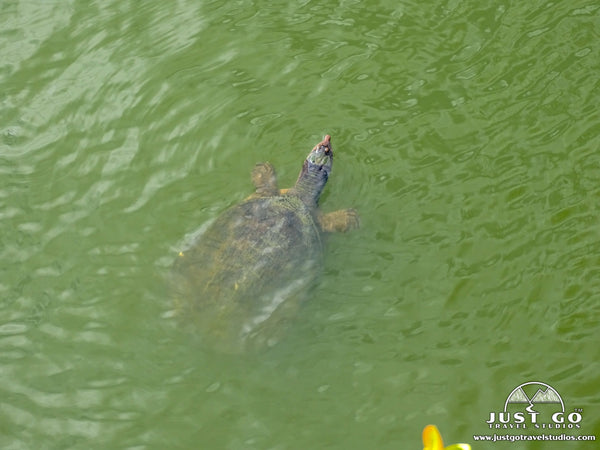
Loop Road Scenic Drive
By far the most popular drive in the Preserve, this 24-mile (one way) road is a great way to get immersed into the Preserve. The trail starts about 4 miles west of the Oasis Visitor Center (on the Tamiami Trail) before meeting up with the Tamiami Trail about 17 miles to the east. You can go on the trail in either direction, though most start near the Oasis Visitor Center and travel south then east. The trail is mostly dirt / gravel, though it is usually passable by all types of cars. You should still ask a ranger for conditions ahead of time, just to be sure. On the Loop Road, you will encounter plenty of wildlife and scenery, including the Sweetwater Strand. The Sweetwater Strand has plenty of nutrients for the Cypress Trees, allowing them to thrive. You should allow 2-4 hours to take this drive, though you can finish it in about a little over an hour if you limit the number of stops you take. For a mile-by-mile description of what you can expect on this drive, check out the Loop Road Scenic Drive Guide on the NPS website.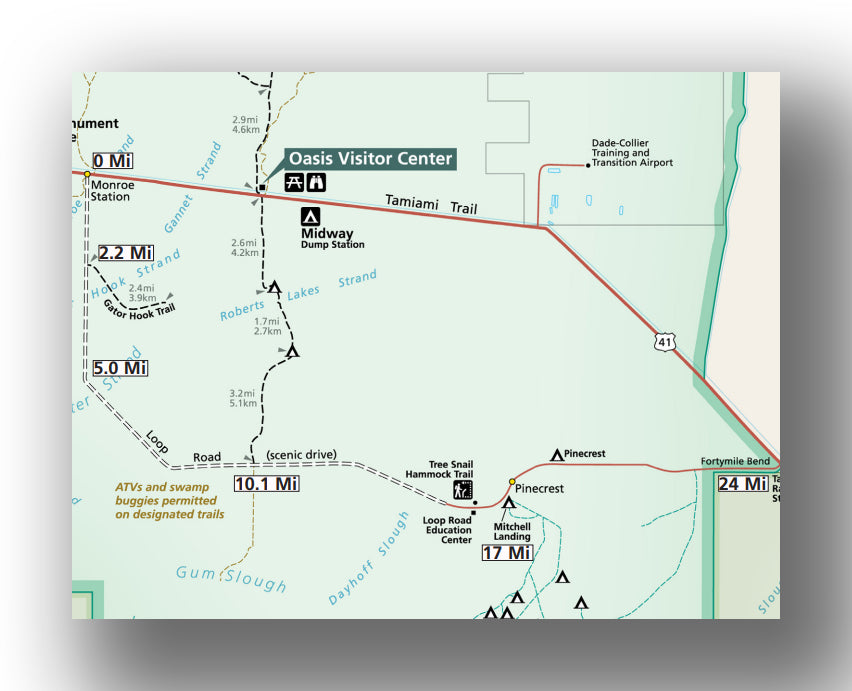
Loop Road Scenic Drive map, courtesy of the National Park Service
Turner River, Upper Wagonwheel and Birdon Road Loop Drive
The shorter of the two scenic drives, this 16.4-mile (one-way) drive is phenomenal for bird viewing in particular. Since there is a canal along most of the drive, there is standing water that attracts wildlife during all times of the year. You can learn more about this loop by downloading the Turner River, Upper Wagonwheel and Birdon Road Loop Drive Guide on the NPS website.

Turner River, Upper Wagonwheel and Birdon Road Loop Drive map, courtesy of the National Park Service
Hiking
There are a few trails to check out while you are in the park. We’ll cover those in detail in the next section.
HIKING TRAILS IN BIG CYPRESS NATIONAL PRESERVE
Be advised that if you are hiking on trails (rather than boardwalks), there is a good chance that you will encounter plenty of water on the trail. You can get through it without much trouble, but you do have to be prepared for water.
Florida National Scenic Trail
If you are up for backcountry hiking, then you can really experience the Preserve by getting on the Florida National Scenic Trail. This trail covers the entire state of Florida from south to north. You do need to file a backcountry hiking permit before you head out on the trail. There are also plenty of campsites along this trail as well. If you do decide to take this trail, make sure you are prepared and check in with the rangers for the latest information.
HP Williams Roadside Park
The HP Williams Roadside Park is on the west side of the Tamiami Trail, just about 3 miles east of the Big Cypress Swamp Visitor Center. There are picnic tables here as well as a short 200-meter boardwalk.
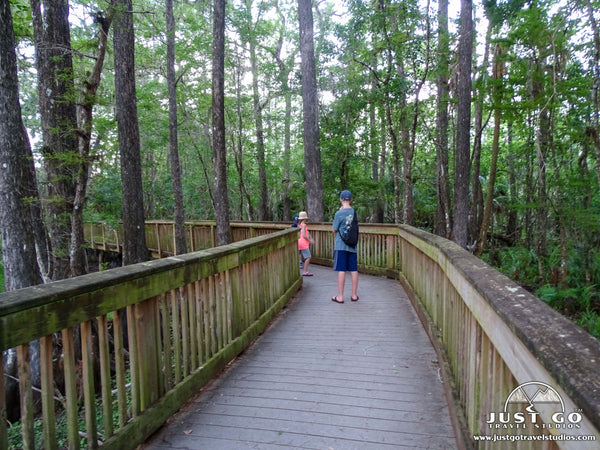
Kirby Storter Roadside Park
The Kirby Storter Roadside Park was one of our favorite stops. Located in between the visitor centers on the Tamiami Trail (and 3 miles west of where the Loop Road meets up with the Tamiami Trail), there are picnic facilities here as well as a one-mile boardwalk. This walk heads through a large cypress strand and is great for viewing wildlife and getting immersed in the Preserve. There is also an alligator viewing area at the end of the trail.

HOW TO GET TO BIG CYPRESS NATIONAL PRESERVE AND OTHER TRAVEL INFORMATION
The preserve is quite easy to find once you get on the Tamiami Trail, and there are plenty of signs along the highway for key stops.
- If you are coming from Miami, it won’t take long to get onto Highway 41 and head west to the Preserve. It will take about 45 minutes (without traffic) to enter the preserve. Directions from Miami International Airport to Big Cypress National Preserve.
- If you are visiting southern Florida, you may also be coming from either Biscayne National Park or Everglades National Park. Homestead is a common home-base for both parks. Directions from Homestead to Big Cypress National Preserve. This will take about an hour and is a great trip to couple with a visit to Shark Valley (which is part of Everglades National Park).
WHERE TO STAY WHEN VISITING BIG CYPRESS NATIONAL PRESERVE
Big Cypress National Preserve Lodging: There is no lodging inside the preserve. We recommend staying in nearby Homestead, Florida. This is a great home base for Everglades and Biscayne National Parks as well.
Camping in Big Cypress National Preserve: There are eight campgrounds inside of Big Cypress National Preserve. Five have RV sites and some take reservations. Details on campgrounds in Big Cypress National Preserve can be found here.
BEST TIME TO VISIT BIG CYPRESS NATIONAL PRESERVE
Big Cypress National Preserve is open year-round. If you have the option, it’s best to visit in the dry season, which is from November through April. It’s also not too hot, which means that the wildlife will be active during the day.
Rains come in the summer, making some of the roads hard to navigate and it can also make the mosquitoes unbearable.
WHAT TO BRING TO BIG CYPRESS NATIONAL PRESERVE
- There is no doubt that you need to be prepared for sun in Florida. We Sun Bum Reef Safe sunblock since it’s friendly to the nearby coral reefs (which is not common in sunblock). You should also bring a hat and sunglasses.
- Be sure to bring plenty of water in your car, as there are few spots to refuel when on the Tamiami Trail.
- Binoculars are great for birdwatching in particular.
- Be ready for mosquitoes no matter what time of year you visit. We recommend bringing plenty of bug spray.
RELATED INFORMATION ON BIG CYPRESS NATIONAL PRESERVE AND OTHER FLORIDA NATIONAL PARKS FROM JUST GO TRAVEL STUDIOS
- While visiting this part of Florida, you are going to want to check out the other great parks down here. We wrote about them in our blogs on What to See and Do in Biscayne National Park, What to See and Do in Everglades National Park and What to See and Do in Dry Tortugas National Park.
- To remember your trip to Big Cypress National Preserve, check out our Big Cypress National Preserve Poster.
- We also can turn a photo that you send to us into a custom vintage-style travel poster. We’d love to work with you!

